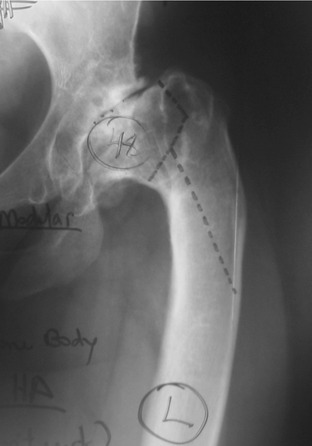CHAPTER 38 Extended Trochanteric Osteotomy
Anterior Approach
INDICATIONS AND CONTRAINDICATIONS
ETO is often recommended for difficult femoral revisions, although it can be used to correct deformity in primary arthroplasty (Fig. 38-1). Ideally suited for removal of cementless or cemented femoral stems, including fractured stems, it also facilitates complete removal of distal cement, the cement plug, and bony pedestals (Fig. 38-2). Other common indications include deformity of the proximal femur, revision of femoral stems placed in significant varus, previous trochanteric osteotomy with bony overgrowth or trochanteric escape, and the need to perform extensive acetabular reconstructive surgery. Relative contraindications to ETO include revisions in which a cemented stem is to be implanted, as the cement may extrude into the osteotomy site. One must be cautious in using this approach with cortical bone that is thin secondary to osteolysis and therefore renders reattachment to the femur challenging.

FIGURE 38-1 Proximal femoral deformity. Note that the planned osteotomy allows for correction of the varus angulation.











